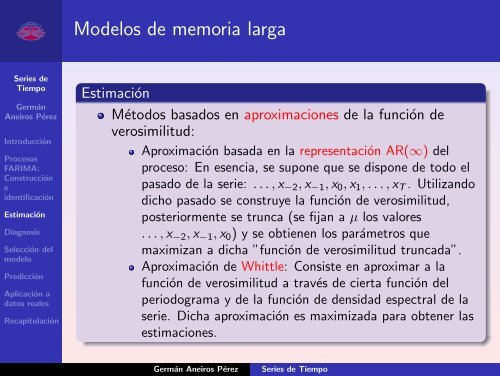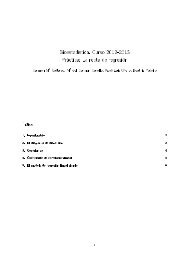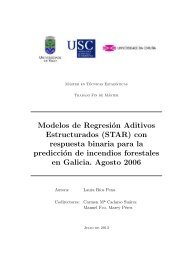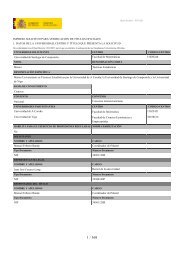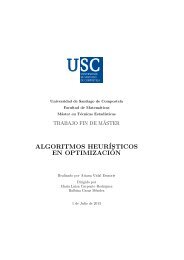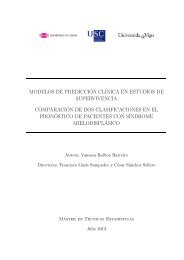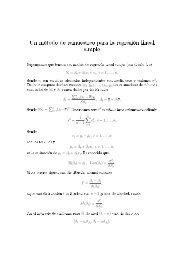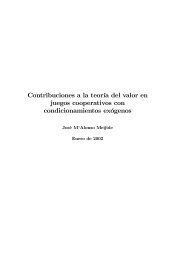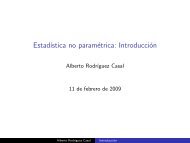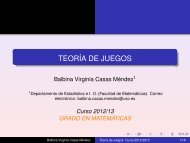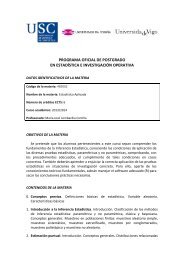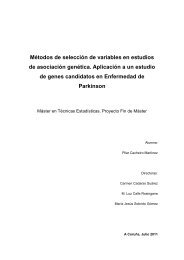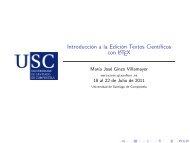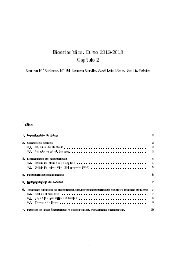You also want an ePaper? Increase the reach of your titles
YUMPU automatically turns print PDFs into web optimized ePapers that Google loves.
Mo<strong>de</strong>los <strong>de</strong> memoria larga<br />
<strong>Series</strong> <strong>de</strong><br />
<strong>Tiempo</strong><br />
Germán<br />
Aneiros Pérez<br />
Introducción<br />
Procesos<br />
FARIMA:<br />
Construcción<br />
e<br />
i<strong>de</strong>ntificación<br />
Estimación<br />
Diagnosis<br />
Selección <strong>de</strong>l<br />
mo<strong>de</strong>lo<br />
Predicción<br />
Aplicación a<br />
datos reales<br />
Recapitulación<br />
Estimación<br />
Métodos basados en aproximaciones <strong>de</strong> la función <strong>de</strong><br />
verosimilitud:<br />
Aproximación basada en la representación AR(∞) <strong>de</strong>l<br />
proceso: En esencia, se supone que se dispone <strong>de</strong> todo el<br />
pasado <strong>de</strong> la serie: . . . , x −2 , x −1 , x 0 , x 1 , . . . , x T . Utilizando<br />
dicho pasado se construye la función <strong>de</strong> verosimilitud,<br />
posteriormente se trunca (se fijan a µ los valores<br />
. . . , x −2 , x −1 , x 0 ) y se obtienen los parámetros que<br />
maximizan a dicha ”función <strong>de</strong> verosimilitud truncada”.<br />
Aproximación <strong>de</strong> Whittle: Consiste en aproximar a la<br />
función <strong>de</strong> verosimilitud a través <strong>de</strong> cierta función <strong>de</strong>l<br />
periodograma y <strong>de</strong> la función <strong>de</strong> <strong>de</strong>nsidad espectral <strong>de</strong> la<br />
serie. Dicha aproximación es maximizada para obtener las<br />
estimaciones.<br />
Germán Aneiros Pérez<br />
<strong>Series</strong> <strong>de</strong> <strong>Tiempo</strong>


